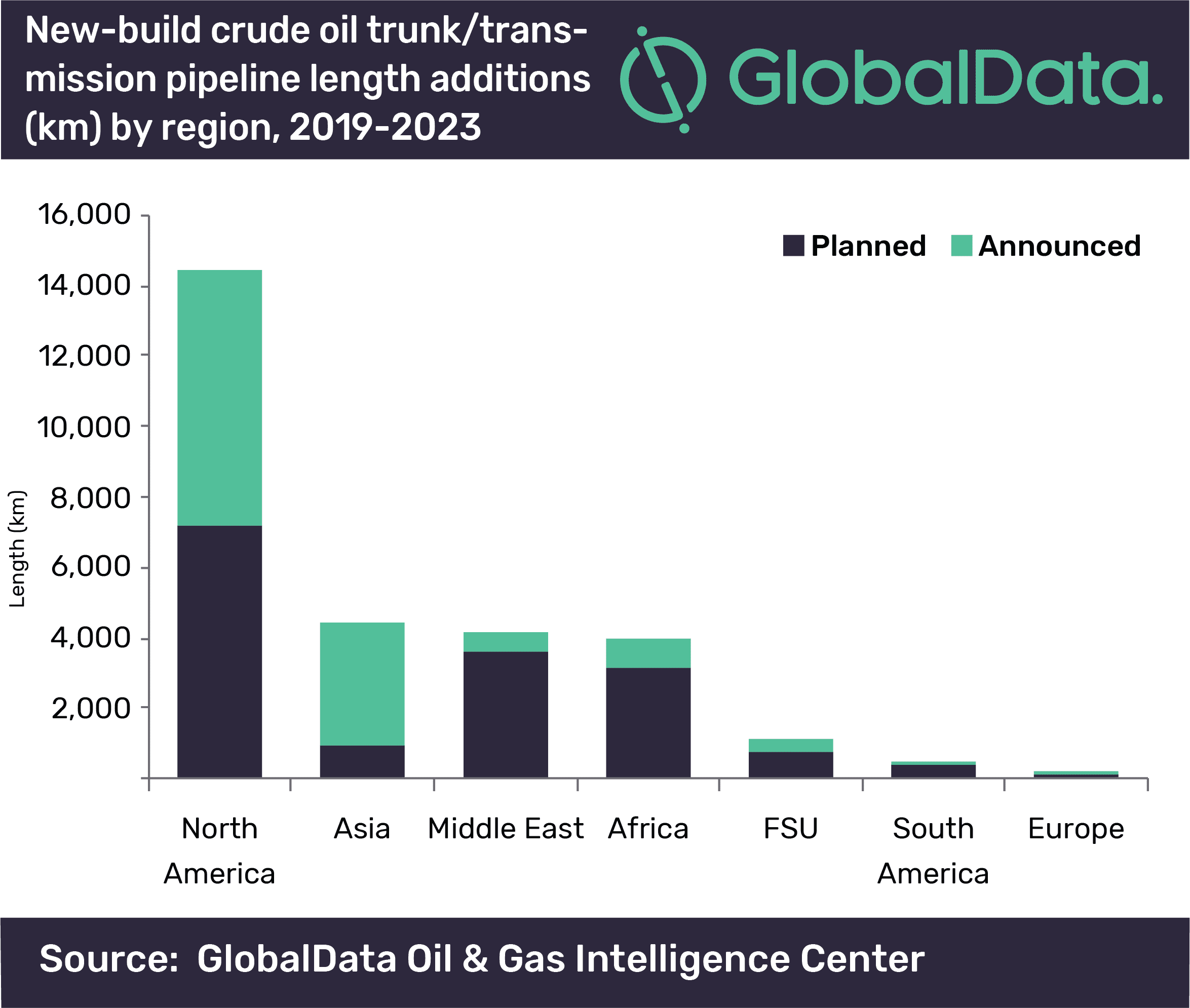North America is set to drive the global new-build crude oil trunk/transmission pipeline length additions, contributing around 51% of the global planned and announced crude oil pipeline length additions between 2019 and 2023, says GlobalData, a leading data, and analytics company.
The company’s report, ‘Global Crude Oil Pipelines Industry Outlook to 2023 – Capacity and Capital Expenditure Outlook with Details of All Operating and Planned Crude Oil Pipelines’, reveals that North America is likely to have a new-build crude oil pipeline length of 14,344km by 2023.
Varun Ette, Oil and Gas Analyst at GlobalData, comments: “By 2023, 29 new-build crude oil pipelines are expected to start operations in North America, of which 16 are planned projects (with a total length of 7,148.9km), and 13 are in early-stage announcement (with a total length of 7,195km). The Liberty Oil Project is the longest upcoming announced pipeline in the region with a length of 2,172.2km.”

GlobalData identifies that Asia will be contributing around 16% of global new-build crude oil pipeline length additions during the 2019–2023 period. In Asia, six new-build crude oil pipelines are expected to commence operations by 2023, of which two are planned pipelines, and four are early-stage announced projects. Gwadar–Kashgar is the longest upcoming announced crude oil pipeline in the region with a length of 2,414km.
Ette concludes: “The Middle East is the third-highest contributor to the global new-build planned and announced crude oil pipeline length additions by 2023 with a total length of 4,054.8km. Basra–Aqaba Oil is the longest upcoming crude oil pipeline in the region with a length of 1,700km.”
About GlobalData
4,000 of the world’s largest companies, including over 70% of FTSE 100 and 60% of Fortune 100 companies, make more timely and better business decisions thanks to GlobalData’s unique data, expert analysis, and innovative solutions, all in one platform. GlobalData’s mission is to help our clients decode the future to be more successful and innovative across a range of industries, including the healthcare, consumer, retail, technology, energy, financial and professional services sectors




